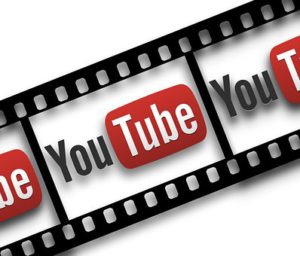Marketing on YouTube

YouTube, the video-sharing website, was created in 2005, and since then has become one of the largest, most visited websites in the world. YouTube has massive traffic and viewers with over 1,325,000,000 people utilizing it for personal, educational, and commercial reasons. There are currently 300 hours of video uploaded to YouTube every minute of every day – that’s five hours of video content every second! 4,959,000,000 YouTube videos are viewed daily, and the total number of hours of video watched on YouTube each month is approximately 3.25 billion.
Today, YouTube is a critical marketing tool for any company in any industry. In fact, since its launch, the Top 100 Global Brands have published a total of 258,000 videos across 1,378 YouTube channels, attracting over 9.5 billion total views. What helps makes YouTube such an essential element of any marketing strategy is its ease of importing and uploading video content. With a simple flip camera, or even a mobile phone with video capabilities, basic videos can be created. And because of its easy-to-use format, messages on YouTube can spread quickly and efficiently across a variety of mediums including Facebook and Twitter, embedded in websites, and via email. In addition, the end user does not need a special viewer, such as Windows Media Play or Quick Time, to view a YouTube video.
Marketing experts agree that there is no simpler, more direct, and easily absorbed way to display information than through video content. 15 seconds of video can be more engaging and provide more observable information than an entire page of ads. And because consumers are no longer satisfied by physical ads or static marketing, and, more than ever, want interactive, aesthetic, and engaging material, YouTube video marketing, when used efficiently and intelligently, can help build trust and establish a company’s authority. Uploading video content, which contains a company’s views and ideas, provides an aura of expertise and influence. By uploading videos with tips and strategies, businesses can not only get attention, but also provide help and value to their customers.
Beyond viewing of the video, YouTube offers marketers several different ways to connect with their target audience. For example, viewers are able to leave feedback and comments on the videos. This allows viewers to interact not only with each other, but also with the company. This opens a line of communication between customers and company. Businesses are able to reply to comments, post questions, opinions, and engage with their viewers. This can have a remarkable impact on branding because new viewers will be able to see and read the back and forth communication between the business and other viewers. This humanizes the business, and makes them appear as approachable, professional, and helpful.
In order to maximize YouTube’s potential, the following best practices should be followed: • Produce video content as consistently as possible. The best-performing brands publish high volumes of content on a regular schedule.
• Learn and perfect YouTube’s architecture and SEO rules. The best-performing brands take more care in optimizing their videos and channels, and maintain more playlists and video tags.
• Videos do not need to be over-produced; content tends to be more important than video quality.
• Integrate YouTube videos with all other online marketing strategies. Facebook and Twitter are among the most important sources of traffic on YouTube.
• Apply branding consistently and methodically. Top performers brand their videos in both the video content itself as well as in metadata, which includes titles, tags, and descriptions.
 1-844-47-Click (1-844-472-5425)
1-844-47-Click (1-844-472-5425)

